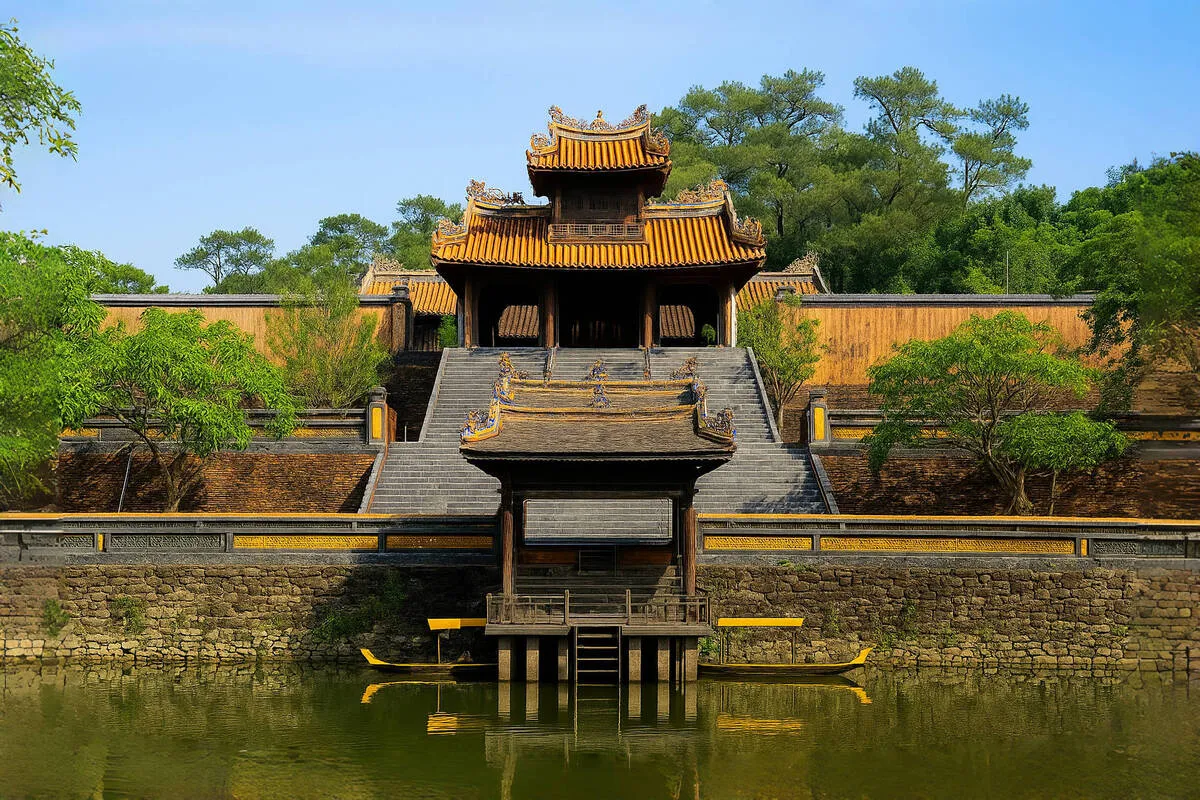Tu Duc Tomb hides things that books have not told
- Sunday, Jun 08, 2025, 10:32 (GMT+7)
Tu Duc Tomb hides things that books have not told
Tu Duc’s Tomb, a unique historical and architectural monument within the Complex of Hue Monuments, stands as a profound embodiment of the philosophical ideals, aesthetics, and worldview of a poet-emperor. More than just the final resting place of Emperor Tu Duc, the tomb represents a rare and symbolic intersection of power, literature, and contemplative solitude in Vietnamese royal culture during the latter half of the nineteenth century. In today’s context, where many heritage sites are commercialized or viewed through the lens of mass tourism, it is essential to approach Tu Duc’s Tomb as a holistic symbol of humanity, politics, and art in order to restore its true value.
Situated in Thuong Ba village, Thuy Xuan commune, Hue City, the tomb began construction in 1864 and was completed in 1867, far ahead of its original schedule. Emperor Tu Duc spent nearly the last two decades of his life residing and working within this very complex. As a result, the structure took on the character of a lived-in estate rather than a conventional burial ground. The combination of natural scenery, lakes, pavilions, shrines, and supporting structures was arranged in an asymmetrical layout, reflecting artistic thinking deeply influenced by poetry and Eastern aesthetics. This was not merely a tomb but a living space, a spiritual stage for slow living, contemplation, and escape from the political conflicts of the mid-Nguyen era.
What makes this monument especially remarkable is its association with a major historical event. The rapid and large-scale construction of Tu Duc’s Tomb shocked the royal court, drained national finances, and placed heavy labor burdens on the people. This situation triggered the Chay Voi uprising in 1866. In the aftermath, the emperor was compelled to rename the tomb from Van Nien Co to Khiem Cung and eventually Khiem Lang as an expression of humility and repentance toward his subjects. This change of name was more than ceremonial. It marked a clear ideological shift within a monarch caught between duty and helplessness. It stands as one of the rare instances in Nguyen dynasty history where an emperor openly expressed remorse through both architecture and symbolic language.
The artistic atmosphere of Tu Duc’s Tomb is deeply tied to the emperor’s poetic lifestyle. Hoa Khiem Palace, once the site of royal meetings, is not grand or imposing like other imperial structures but modest and serene, mirroring the introspective nature of the emperor. The wide Luu Khiem Lake, flanked by the Xung Khiem and Du Khiem pavilions, was where he wrote poetry, admired lotus flowers, and conversed with his concubines. This space is not a typical tomb but rather a palace nestled in nature, infused with Confucian ideals and traditional aesthetics. Such a spatial concept was rare among East Asian tombs of the time, highlighting the artistic independence of Emperor Tu Duc and the visionary architects of Hue.
In addition to its symbolic and aesthetic value, the tomb contains deep political meaning, most clearly demonstrated by the Khiem Cung Ky stele. This is the largest stone stele among Nguyen dynasty tombs and was personally written by the emperor. Unlike traditional inscriptions that glorify a ruler’s achievements, this text is a confession. It acknowledges his failures in governance and expresses his frustration with both personal limitations and external circumstances. Publishing these reflections for future generations was not an arbitrary act. It was a historical message, shaped by humanist philosophy and self-reflection, rare in Vietnamese royal culture.
One of the most distinctive elements of Tu Duc’s Tomb is the secret location of the emperor’s actual burial site. According to records, more than two hundred people involved in the burial were executed afterward to protect the secret. This extreme level of confidentiality has fueled decades of speculation in both scholarly and folk narratives. The blending of official history with myth has made Khiem Lang not just a historical monument but a space of imagination and cultural mystery.
The tomb complex is also the resting place of Empress Le Thien Anh and Emperor Kien Phuc, the adopted son of Tu Duc. The presence of these three historical figures within a single enclosed area adds a profound layer of emotional depth to the site. This is rare in East Asian monarchies, where blood ties were typically prioritized. Choosing to be buried alongside those bonded by spirit rather than blood reflects a worldview shaped more by introspection and intellect than by absolute power.
Today, Tu Duc’s Tomb is often passed over quickly as part of standard sightseeing routes in Hue. However, when examined with a deeper understanding of history and aesthetics, the site becomes a model for the integration of physical heritage with cultural thought. It is not only a place preserving the remnants of an empire. It is also a reminder of the responsibilities of leadership, the limitations of authority, and the wisdom of admitting one’s faults. These are timeless lessons with lasting relevance for civic education and sustainable cultural development.
Preserving Tu Duc’s Tomb is not simply about safeguarding a historical structure. It is a moral duty to protect a stream of thought vital to the national identity. In a time when many heritage sites are being altered by commercial exploitation, restoring the tomb’s original spirit is both urgent and necessary. This space must return to its purpose as a place for reflection, where history is heard through silence, where future generations may come to understand that an emperor chose to live out his final years within his own tomb not to flaunt power but to quietly reflect on his life. And in that quietness lies his most enduring legacy.

 CHECKIN.VN
CHECKIN.VN








Share on